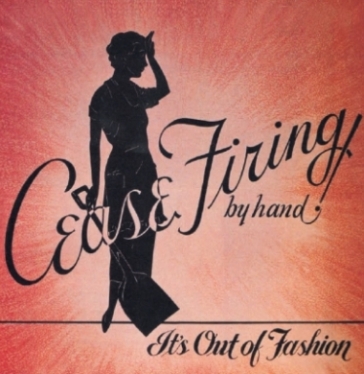Een gezond en comfortabel binnenklimaat als negentiende-eeuwse ontwerpopgave
‘...and are surprised when they get headaches and eventually grow pale’.
DOI:
https://doi.org/10.7480/knob.118.2019.1.3712##submission.downloads##

Samenvatting
Thus far, the nineteenth-century history of the technical control of the indoor climate in buildings (ventilation, heating, regulation of humidity) in the Netherlands has received scant attention.
This article shows that the topic requires an interdisciplinary approach because it entails cultural history, scientific history and technical aspects. Cultural history because the demand for greater comfort and the growth of night-time entertainment in the nineteenth century reinforced the demand for some form of indoor climate control. Scientific history because both the causes of a poor indoor climate and its impact on human beings were the subject of intensive research and growing understanding. And finally technical, because technical solutions aimed at improving the indoor climate (up to and including establishing workable air, ventilation and heating standards) became increasingly important for Dutch architects and for a professional group that made unprecedented strides in the nineteenth century: the engineers.
After first introducing the reader to the theoretical concepts of the above-mentioned aspects, the article proceeds to test and illustrate this ‘paper reality’ in light of an actual case, the construction of the Concertgebouw in Amsterdam from 1883-1886. Architect A.L. van Gendt and engineers worked together here, employing a combination of architecture and technical systems to create a ‘climate machine’ capable of further enhancing a concert hall with excellent acoustics. The ambition was to turn the Concertgebouw into a cultural temple in which an ingenious ventilation and heating system ensured that the orchestra was as comfortable during rehearsals and performances as the audience during the concert and the interval.
To give some idea of this ‘climate machine’: the heating system consisted of bricked-in furnaces in the building’s basement. Fresh air was channelled from the garden into the heating chamber. Once heated, a large ventilator pushed the warm air through a humidifying chamber and from there into all the rooms and spaces in the building. In the concert hall the removal of stale air was linked to the gas lighting system: the caissons in the hall’s coffered ceiling were fitted with ventilation rosettes; the heat from the open gas lighting helped to create sufficient draught to remove the stale air naturally.
As a consequence of the huge technological advances in air conditioning during the twentieth century, many of the original nineteenth-century innovations and technical systems have since disappeared. Knowledge of and insight into the way people in the nineteenth century tried to create a healthy and comfortable indoor climate can help historians, architects and consultants involved in renovation and repurposing to correctly interpret and appreciate surviving elements of such climate designs.
Referenties
J.M. Oudendijk, ‘Zuivere lucht in de kamer’, Eigen Haard (1888), 391-392.
Belangrijk werk is in Nederland verricht door Meindert Stokroos. Van zijn hand verscheen in 2001 Verwarmen en verlichten in de negentiende eeuw. In de afgelopen decennia werd met enige regelmaat over het onderwerp gepubliceerd in met name Groot-Brittannie en de Verenigde Staten, o.a. in R. Banham, The Architecture of the Well-tempered Environment, Londen (1984, eerste druk 1969); R. Bruegmann, ‘Central Heating and Forced Ventilation. Origins and Effects on Architectural Design’, The Journal of the Society of Architectural Historians 38 (1978), 156; D. Hawkes, The Environmental Tradition. Studies in the Architecture of Environment, London 1996; V. Lerum, Sustainable Building Design. Learning from Nineteenth Century Innovations, Londen 2015; B. Donaldson en B. Nagengast, Heat & Cold. Mastering the Great Indoors, Atlanta 1994.
De beperkte omvang van dit artikel leent zich er niet voor om de geschiedenis van comfort uitputtend te behandelen. De volgende publicaties over de definitie van comfort zijn voor dit artikel als uitgangspunt gebruikt: T. Maldonado, ‘The Idea of Comfort’, Design Issues 8 (1991), 35-36; J. Crowley, The Invention of Comfort. Sensibilities and Design in Early Modern Britain and Early America, Baltimore 2001, 141-143, 292; E. Shove, Comfort, Cleanliness and Convenience. The Social Organization of Normality, Oxford 2003, 24, 45.
Maldonado 1991 (noot 3), 37.
J. Leliman, ‘De Arbeiderswoning’, Bouwkundige Bijdragen 15 (1867), 334; J. Drysdale en J. Hayward, Health and Comfort in House Building, or, Ventilation with Warm Air by Self-acting Suction Power, Londen 1872, preface.
Maldonado 1991 (noot 3), 40 en A. van der Woud, De nieuwe mens. De culturele revolutie in Nederland rond 1900, Amsterdam 2015, 252.
Banham 1984 (noot 2), 10; Bruegmann 1978 (noot 2), 156.
I. Cieraad (red.), At Home. An Anthropology of Domestic Space, Syracuse 2006, 120; E. Jacob, Notes on the Ventilation and Warming of Houses, Churches, Schools and Other Buildings, Londen 1894, 12; D.B. Reid, Illustrations of the Theory and Practice of Ventilation with Remarks on Warming, Exclusive Lighting, and the Communication of Sound, Londen 1844, 206; W. de Waal, ‘Over ventilatie of luchtverversching. Gevolgd naar het Engelsch van Morill Wyman’, Bouwkundige Bijdragen 7 (1852), 77-78; R. Porter, Geschiedenis van de geneeskunde, Gent 2006, 79-80; Shove 2003 (noot 3), 86-87; Bruegmann 1978 (noot 2), 149.
In de negentiende eeuw, en daarom ook in dit artikel, werd koolstofdioxide consequent aangeduid als koolzuurgas. Drysdale en Hayward 1872 (noot 5), 13; A. Freem, ‘Doelmatige ventileering’, Bouwkundig Weekblad 9 (1899), 20; D. Knuttel, ‘De hygiene in de bouwverordeningen’, Bouwkundig Weekblad 2 (1882), 312; D. Reid 1844 (noot 8), x-xi ; C. Tomlinson, A rudimentary treatise on warming and ventilation: being a concise exposition of the general principles of the art of warming and ventilating domestic and public buildings, mines, lighthouses, ships &c., Londen 1850, 172; G. Cooper, Air-conditioning America. Engineers and the Controlled Environment, 1900-1960, Baltimore 1998, 59.
G. Looman, ‘Over eenige eigenschappen van de lucht, het water en den bodem’, Bouwkundig Weekblad 8 (1888), 127-128; J. Rinkes, ‘Heeft eene doeltreffende en weinig kostbare luchtverversching voor particuliere gebouwen onoverkomelijke bezwaren?’, Bouwkundige Bijdragen deel 21 (1875), 159; Tomlinson 1850 (noot 9), 5-10; De Waal 1852 (noot 8), 65-66, 121-122, 200.
Donaldson en Nagengast 1994 (noot 2), 20.
Jacob 1894 (noot 8), 15; Reid 1844 (noot 8), 176.
Jacob 1894 (noot 8), 16-17.
W. Bernan en R. Stuart, On the history and art of Warming and Ventilating rooms and buildings: by open fires, hypocausts, German, Dutch, Russian, and Swedish stoves, steam, hot water, heated air, heat of animals, and other methods; with notices of the progress of personal and fireside comfort, and of the management of fuel. Illustrated by two hundred and forty figures of apparatus. Volume 2, Londen 1845, 314; Tomlinson 1850 (noot 9), 13-14, 258-260; N.n., ‘Lezingen over ventilatie’, De Opmerker 12 (1877), z.p.
A. Godefroy, ‘Luchtverversching in gebouwen en woonhuizen’, Bouwkundige Bijdragen deel 11 (1860), 213-215; Jacob 1894 (noot 8), 20-21; M. von Pettenkofer, The relations of the air to the clothes we wear, the house we live in, and the soil we dwell on: 3 lectures, abridged and translated by Augustus Hess, Londen 1873, 17; Reid 1844 (noot 8), 200; C. Rieber, ‘Een nieuwe ventilator’, Bouwkundig Weekblad 1 (1881), 90; F. Unger, ‘Centrale verwarming en luchtverversching van gebouwen’, Architectura 21 (1913), 106-107; N.n., ‘Het onderzoek van onze kamerlucht’, Eigen Haard 41 (1915), 214-216.
N.n. 1915 (noot 15), 214-215, zie ook H. Hinkelman, ‘Over ventilatie van woonvertrekken’, Bouwkundig Weekblad 6 (1886), 185-186.
Godefroy 1860 (noot 15), 222-225; P.P., ‘Luchtverversching in school, woning en stal’, De Opmerker 5 (1870), z.p.
P.P. 1870 (noot 17), z.p.; K. van der Heijden, ‘Verwarming en ventilatie door ing. Joh. Korting naar het Duitsch door K.F. van der Heijden’, Architectura 16 (1908), 401.
Tomlinson 1850 (noot 9), 125.
J. Ruckert, Schoolbouw, Amsterdam z.j.
F. van Erkel, ‘“De waarde der ventilatie”. Een merkwaardig rapport’, Bouwkundig Weekblad 20 (1900), 226-228; P.P. 1870 (noot 17), z.p.; B. Schwaab, ‘Voordracht over ventilatie, met bijzondere beschouwing van het omgekeerde systeem’, Architectura 17 (1909), 222.
F. Unger, Centrale-verwarming en luchtverversching van gebouwen, Amsterdam 1913, 106-107, 446; De Waal 1852 (noot 8), 226-227; N.n., ‘Ventilatie’, Architectura 8 (1900), 138-140.
N.n., ‘Een gevaar voor den algemeenen gezondheidstoestand’, Bouwkundig Tijdschrift 14 (1896), 20.
Zie bijvoorbeeld M. van Erkel, ‘Ventilatie’, De Opmerker 3 (1868), 67-68; J. Leliman, ‘Eene sectie Bouwkunde in het Koninklijk Instituut van Ingenieurs – of niet?’, Bouwkundig Weekblad 19 (1899), 191-192; N.n., ‘Nieuwe Uitgaven. Ventilatie. Een voordracht door Dr. B. Schwaab, arts. Uitgave van F. van Rossum. Amsterdam’, Bouwkundig Weekblad 25 (1905), 347; F. Unger, ‘Verwarming en luchtverversching in hun verhouding tot architectuur, techniek en hygiene’, Bouwkundig Weekblad 28 (1908), 888-892; Unger 1913 (noot 15), 446.
In de Nederlandse praktijk werden met name het werk van Jean Claude Peclet (Frankrijk), Thomas Tredgold, Robert Meikleham (onder pseudoniem Walter Bernan), Marquis Jean-Frederique de Chabannes, David Boswell Reid, John Drysdale en John Hayward (allen uit Groot-Brittannie), en Max von Pettenkofer en Konrad Meier (beiden uit Duitsland) veelvuldig aangehaald.
Crowley 2001 (noot 3), 171; A. Saint, ‘Architect and Engineer. A Study in Construction History’, Construction History 31 (2005), 21-30; Shove 2003 (noot 3), 125-126.
N.n., ‘A.L. van Gendt’, Bouwkundig Weekblad 18 (1901), 166.
Bouwbesluit 2012, publicatiedatum 3 november 2018, afdeling 3.6 Luchtverversing, artikel 3.29, lid 3; H. Hinkelman, ‘Onderzoek van lucht in woonvertrekken’, Bouwkundig Weekblad 4 (1884), 236-237; Hinkelman, 1886 (noot 16), 186; Jacob 1894 (noot 8), 20.
C. Huijgen, ‘Verwarming en Luchtverversching van het Concertgebouw te Amsterdam’, Bouwkundig Weekblad 6 (1886), 132-134.
E. Schmitt, Künstlerateliers. T.4. Entwerfen, Anlage und Einrichtung der Gebäude, Berlijn 1901, 259.
Hinkelman 1884 (noot 28), 236-237; Hinkelman 1886 (noot 16), 186; Jacob 1894 (noot 8), 20; N.n., ‘Een en ander over ventilatie-inrichtingen in gebouwen’, Architectura 13 (1905), 281-282, (1906), 10; Van der Heijden 1908 (noot 18), 401.
C. Huijgen, ‘Centrale verwarming’, Bouwkundig Weekblad 12 (1892), 250-253.
H. van Royen, Historie en kroniek van het Concertgebouw en het Concertgebouworkest 1888-1988. Deel 1, Zutphen 1988, 69-96; N.N., ‘Het nieuwe concertgebouw te Amsterdam’, Eigen Haard (1886), 641-644; A. van Gendt, ‘Het concertgebouw te Amsterdam’, De Opmerker 23 (1888), 2-3; Huijgen 1886 (noot 29), 132-134, zie ook Stokroos 2001 (noot 2), 130-131.
Huijgen 1886 (noot 29), 133.
Hoewel er in de kelder geen luchtreinigingsinstallatie stond opgesteld, kon de lucht wel worden bevochtigd. Huijgen 1886 (noot 29), 133.
Deze ventilator had een vleugeldoorsnede van 1,75 meter en werd aangedreven door een gasmotor van 5 pk.De ventilator kon 380 omwentelingen per minuut maken en had daarmee een maximaal vermogen van 70.000 m3 per uur. Huijgen 1886 (noot 29), 134.
Het Nieuwe Instituut (HNI), archief A.L. van Gendt, archiefnummer BEST5, Bestek Concertgebouw Amsterdam, inv.nr. BEST5, 21; Huijgen 1886 (noot 29), 132-134.
Voor het beheersen van de binnentemperatuur waren elektrische afstandsthermometers geïnstalleerd, zogenaamde Thermo-indicateurs, die met een overzichtsbord in de kelder in verbinding stonden. Door een druk op een knop kon de machinist door middel van een plaatje op het bord zien welke temperatuur de verschillende thermometers aangaven. De thermometers konden worden afgesteld op veertien, zestien of achttien graden. HNI, Bestek 1885 (noot 37), 64 en Huijgen 1886 (noot 29), 132-134.
Tomlinson 1850 (noot 9), 167-168; Jacob 1894 (noot 8), 64.
N.N. 1886 (noot 33), 643.
Gepubliceerd
Citeerhulp
Nummer
Sectie
Artikelen
Licentie
Copyright (c) 2019 Natasja Hogen

Dit werk wordt verdeeld onder een Naamsvermelding 4.0 Internationaal licentie.





